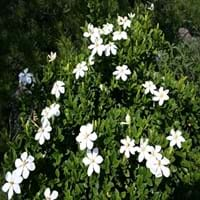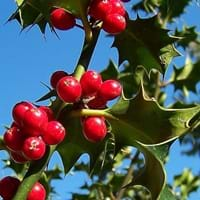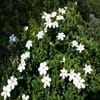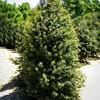Life Span
Perennial
Perennial
Type
Broadleaf Evergreen
Broadleaf Evergreen
Origin
Eastern Asia
United States, Northeastern United States, Mid-Atlantic United States, Southeastern United States, Central United States, South-Central United States, Texas
Types
Gardenia anapetes, Gardenia candida
Ilex opaca laxiflora,Ilex opaca opaca
Number of Varieties
Not Available
Habitat
Dry Forest, Subtropical climates
Coastal sand dunes, moist forests, Swamps
USDA Hardiness Zone
7-10
5-9
AHS Heat Zone
Not Available
Not Available
Habit
Prostrate/Trailing
Pyramidal
Flower Color
White, Ivory
White
Flower Color Modifier
Bicolor
Bicolor
Fruit Color
Not Available
Red
Leaf Color in Spring
Dark Green
Green, Light Green
Leaf Color in Summer
Dark Green
Green, Dark Green
Leaf Color in Fall
Dark Green
Dark Green
Leaf Color in Winter
Dark Green
Dark Green
Leaf Shape
Elliptic
Oval Spiny Leaves
Plant Season
Spring, Summer, Fall, Winter
Spring, Summer, Fall, Winter
Sunlight
Full Sun, Partial Sun
Full Sun, Partial Sun
Type of Soil
Clay, Loam, Sand
Clay, Loam, Sand
The pH of Soil
Acidic, Neutral
Acidic, Neutral
Soil Drainage
Well drained
Average
Bloom Time
Late Spring, Early Summer, Summer, Late Summer, Early Fall, Fall
Late Spring
Tolerances
Shade areas
Salt
Where to Plant?
Container, Ground, Pot
Ground
How to Plant?
Seedlings, Stem Planting
Cuttings, Seedlings
Plant Maintenance
Low
Medium
Watering Requirements
Do Not over Water, Keep ground moist, Never Over-water, Requires a lot of watering, Requires regular watering, Requires watering in the growing season
Average Water Needs, Drought Tolerant
In Summer
Ample Water
Lots of watering
In Spring
Moderate
Moderate
In Winter
Less Watering
Average Water
Soil pH
Acidic, Neutral
Acidic, Neutral
Soil Type
Clay, Loam, Sand
Clay, Loam, Sand
Soil Drainage Capacity
Well drained
Average
Sun Exposure
Full Sun, Partial Sun
Full Sun, Partial Sun
Pruning
Prune in summer, Remove damaged leaves, Remove dead leaves, Remove dead or diseased plant parts
Remove damaged leaves, Remove dead branches, Remove dead leaves
Fertilizers
All-Purpose Liquid Fertilizer, Magnesium, Nitrogen, Potassium
All-Purpose Liquid Fertilizer
Pests and Diseases
Mealybugs, Spider mites, Whiteflies
Red blotch
Plant Tolerance
Shade areas
Drought
Flowers
Showy
Insignificant
Flower Petal Number
Double, Semi-Double
Single
Foliage Texture
Fine
Medium
Foliage Sheen
Glossy
Matte
Attracts
Bugs, Insects, Leaf Hoppers
Birds
Allergy
Asthma, breathing problems
Mild Allergen
Aesthetic Uses
Beautification, Landscape Designing, Showy Purposes
Landscape Designing
Beauty Benefits
Good for skin and hair
Not Available
Environmental Uses
Air purification, Food for insects, Prevent Soil Erosion, Shelter for wildlife, Very little waste
Air purification
Medicinal Uses
Abdominal Disease, Abscess, Acid Reflux
Cold, epilepsy, Itching, Malaria, Pneumonia
Part of Plant Used
Fruits, Leaves, Root
Bark, Fruits, Leaves
Other Uses
Air freshner, Economic Purpose, Employed in herbal medicine, Medicinal oil, Used for its medicinal properties
Decoration Purposes, Used as a dyestuff, Used as Ornamental plant, Used in making tea
Used As Indoor Plant
Yes
No
Used As Outdoor Plant
Yes
Yes
Garden Design
Container, Feature Plant, Foundation, Groundcover, Mixed Border, Tropical
Feature Plant, Foundation, Screening, Wind Break, Shade Trees
Botanical Name
GARDENIA jasminoides 'Radicans'
ILEX opaca
Common Name
Gardenia
Christmas Holly
In Hindi
बौना गार्डेनिया
American Holly
In German
Dwarf Gardenia
American Holly
In French
Gardenia Dwarf
American Holly
In Spanish
Gardenia enana
American Holly
In Greek
νάνος Gardenia
American Holly
In Portuguese
Gardenia Dwarf
American Holly
In Polish
Dwarf Gardenia
American Holly
In Latin
Gardenia Dwarf
American Holly
Phylum
Tracheophyta
Magnoliophyta
Class
Magnoliopsida
Magnoliopsida
Order
Rubiales
Celastrales
Family
Rubiaceae
Aquifoliaceae
Clade
Angiosperms, Asterids, Eudicots
Angiosperms, Asterids, Eudicots
Tribe
Gardenieae
Not Available
Subfamily
Cinchonoideae
Not Available
Season and Care of Dwarf Gardenia and American Holly
Season and care of Dwarf Gardenia and American Holly is important to know. While considering everything about Dwarf Gardenia and American Holly Care, growing season is an essential factor. Dwarf Gardenia season is Spring, Summer, Fall and Winter and American Holly season is Spring, Summer, Fall and Winter. The type of soil for Dwarf Gardenia is Clay, Loam, Sand and for American Holly is Clay, Loam, Sand while the PH of soil for Dwarf Gardenia is Acidic, Neutral and for American Holly is Acidic, Neutral.
Dwarf Gardenia and American Holly Physical Information
Dwarf Gardenia and American Holly physical information is very important for comparison. Dwarf Gardenia height is 15.20 cm and width 60.00 cm whereas American Holly height is 760.00 cm and width 460.00 cm. The color specification of Dwarf Gardenia and American Holly are as follows:
Dwarf Gardenia flower color: White and Ivory
Dwarf Gardenia leaf color: Dark Green
American Holly flower color: White
- American Holly leaf color: Green and Light Green
Care of Dwarf Gardenia and American Holly
Care of Dwarf Gardenia and American Holly include pruning, fertilizers, watering etc. Dwarf Gardenia pruning is done Prune in summer, Remove damaged leaves, Remove dead leaves and Remove dead or diseased plant parts and American Holly pruning is done Remove damaged leaves, Remove dead branches and Remove dead leaves. In summer Dwarf Gardenia needs Ample Water and in winter, it needs Less Watering. Whereas, in summer American Holly needs Lots of watering and in winter, it needs Average Water.





